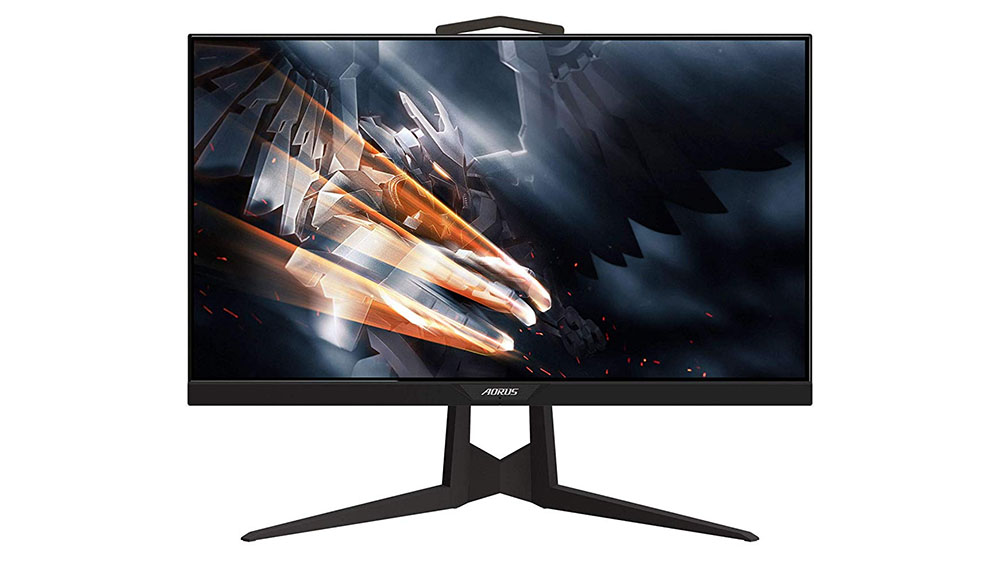Aorus KD25F 240 Hz Gaming Monitor Review: Breaking Our Benchmark Records
Why you can trust Tom's Hardware
Conclusion
With so much focus on monitors with high pixel density, HDR and extended color, users sometimes forget the pleasure of gaming on a display that tracks their every move with precision. The most responsive screens are still TN panels with FHD resolution and super-fast refresh rates. 144 Hz is good, but 240Hz is better. And a low response time makes a clearly visible difference. The Aorus KD25F proved that in both testing and gameplay.
We’ve tested other 240 Hz monitors that use the same core panel as the KD25F, but Gigabyte managed to halve the response time to a claimed 0.5ms, and we can see its effect. Coupled with one of the best overdrives we’ve seen, motion is simply perfect at all framerates. There is no blur or stutter. Once you start playing games, its responsiveness and super-low input lag will intoxicate you.
Out-of-box testing showed a monitor that doesn’t really need calibration, but there is a little room for improvement. Our adjustments delivered an excellent image with nicely saturated color, perfect gamma tracking and a neutral white balance. Contrast is about the same as most TN and IPS screens at just under 1,000:1.
We’ve never had a monitor that made us better players, until now. Its price is firmly in the premium range, and you won’t love its resolution when it comes time to edit photos or work with tiny text in a spreadsheet. But the Aorus KD25F is a high-performance gaming monitor, and judged by that criteria, it’s one of the best we’ve ever reviewed.
Image Credits: Gigabyte, Tom's Hardware
MORE: Best Gaming Monitors
MORE: How We Test Monitors
Get Tom's Hardware's best news and in-depth reviews, straight to your inbox.
MORE: All Monitor Content

Christian Eberle is a Contributing Editor for Tom's Hardware US. He's a veteran reviewer of A/V equipment, specializing in monitors. Christian began his obsession with tech when he built his first PC in 1991, a 286 running DOS 3.0 at a blazing 12MHz. In 2006, he undertook training from the Imaging Science Foundation in video calibration and testing and thus started a passion for precise imaging that persists to this day. He is also a professional musician with a degree from the New England Conservatory as a classical bassoonist which he used to good effect as a performer with the West Point Army Band from 1987 to 2013. He enjoys watching movies and listening to high-end audio in his custom-built home theater and can be seen riding trails near his home on a race-ready ICE VTX recumbent trike. Christian enjoys the endless summer in Florida where he lives with his wife and Chihuahua and plays with orchestras around the state.
-
AlistairAB The Alienware one I bought seemed defective, as OD error was atrocious at 240hz and wasn't adjustable regardless of OD setting. Setting the monitor back to 144hz fixed all the problems. I hope the Aorus isn't the same.Reply
Lipstick on a pig somewhat, as we already have a vastly superior and responsive technology, OLED. Would kill for a 25" 240hz OLED monitor instead, with even faster response times standard. -
thealmightyeyeball I have the Alienware AW2518HF. It is flawless as far as freesync is concerned. It is also about 150 dollars less.Reply
I would get the Alienware. -
Theodore Juices There's an updated version of the AOC AG251FZ, the AG251FZ2. I know because I just owned it for a month before returning it for reasons unrelated to its performance. Why didn't you compare this monitor to that one instead? That would have been much more useful.Reply -
zeekez I just got this monitor, I love it so far but I have a few questions, mainly, does Aim Assist need to be on for the fastest input speed? I've noticed with Aim Assist it dims the screen considerably. I was just curious if the config given for the best color was with it on or off.Reply -
Demi9OD Replyzeekez said:I just got this monitor, I love it so far but I have a few questions, mainly, does Aim Assist need to be on for the fastest input speed? I've noticed with Aim Assist it dims the screen considerably. I was just curious if the config given for the best color was with it on or off.
I think Aim Assist is the Black Frame Insertion feature. You don't need it on and it probably slows down input speed a little bit.
